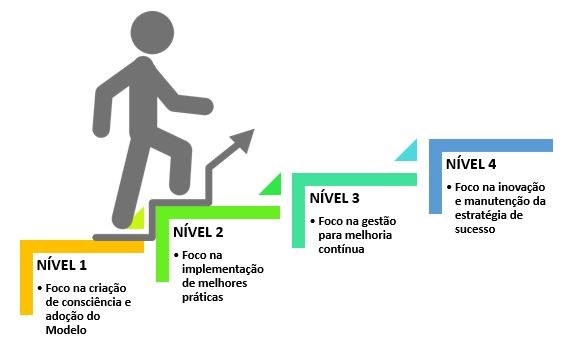The Virtual Health Library (VHL), created by BIREME 23 years ago, has been providing the Latin American and Caribbean Network on Health Sciences Information with a model of information and knowledge management in health. Its main goal is to provide visibility and offer broad access to scientific and technical knowledge in health to the countries of the Region, decreasing the gap between (scientific) evidence and practice.
The evolution of the VHL Model is constant, conceptually, and technologically always aligned and based on collaborative work and networking. One of these important improvements refers to the creation of a new instrument to evaluate the maturity of the VHL instances in countries, thematic areas and/or institutions: we are talking about the VHL Maturity Instrument.
Various sessions/activities were conducted in order to develop the Maturity Instrument, such as co-creation workshops between BIREME collaborators to design the new tool, benchmarking with other maturity models already available on the market, and conducting user tests with VHL Network coordinators, for validation and gathering feedback. The VHL Maturity instrument was created following the principles developed by PAHO for the IS4H-MM Maturity Model (The Information Systems for Health Maturity Assessment Tool)[1].
The VHL Maturity Instrument is a way of evaluating the instances of the VHL Network in the adoption of methodologies, technologies, and good practices based on a self-assessment process. As a result of this process, the coordinators of the VHL instances can identify the quality level of their structures, as well as aspects that must be developed, considering four dimensions/pillars: Governance, Organization and updating of content, Communication and services to users, and Systems and technology.
According to Veronica Abdala, Information Sources Manager at BIREME, “the new instrument for evaluating the VHL differs from the previous model, having as a characteristic the change of focus, from certification to continuous improvement, it uses evaluation methods as automated/sustainable processes and has as the main value delivering a continuous improvement plan to advance in level, and improve the quality of the product/service that is offered by the VHL”.
The VHL instances can be classified into four different Maturity Levels, which can be understood as steps, whose passage is necessary to reach full maturity in adopting the VHL Model (Figure 1).

Figure 1. VHL maturity levels
At Level 1, the focus is on creating awareness and adopting the Model: at this stage, the formation of the Network of Institutions responsible for the governance of the instance is in its initial phase. Those responsible for the instance are trained and aware of the VHL development process. The information sources are starting to be organized following VHL methodologies and technologies.
At Level 2, the focus is on the implementation of best practices: at this stage the governance structure of the instance (Advisory Committee, Executive Board, and Executive Secretary) is formally constituted. The instance has an online portal with a set of operational information sources. Information sources follow VHL methodologies and technologies (where applicable).
At Level 3, the focus is on management for continuous improvement: the governance structure of the instance (Advisory Committee, Executive Board, and Executive Secretary) operates according to a matrix of responsibilities. Information sources are up-to-date and follow documented content selection criteria. The priority health themes related to the VHL theme are highlighted on the portal, with search strategies designed to retrieve relevant content.
At level 4, the focus is on innovation and maintenance of the successful strategy. At this stage, the governance structure of the VHL (Advisory Committee, Executive Board, and Executive Secretariat) meets periodically, follows a predefined work plan, and is engaged in disseminating the VHL and creating new products and services. There are innovative instances for information products, services and/or technologies. Performance indicators are used to develop improvement strategies. Achieving these objectives, the instance is recognized by the VHL Network as a success story.
2021 Action Plan
Projecting a process of continuous improvement to strengthen the VHL Network through the adoption of the new VHL Maturity Instrument, the 2021 Action Plan was presented. As a result of the evaluations carried out by the VHL instances, activities to be worked on by each one throughout 2021. There will be six virtual meetings throughout the year for follow-up and technical/methodological support to support VHL coordinators in the development of the plan’s activities.
Related articles
Results of the VHL Network Action Plan in 2020. BIREME Bulletin n° 51. Available at: https://boletin.bireme.org/en/2021/01/04/results-of-the-vhl-network-2020-action-plan/
The LA&C VHL Network defines its Action Plan for 2020. BIREME Bulletin n° 51. Available at: https://boletin.bireme.org/en/2020/03/29/the-lac-vhl-network-defines-its-action-plan-for-2020/
[1] Pan American Health Organization. About the IS4H-MM Assessment. Available at: https://www3.paho.org/ish/index.php/en/about-mm